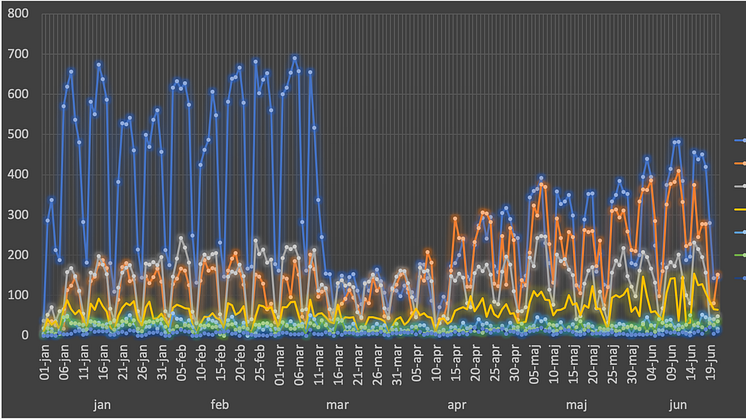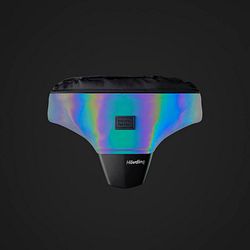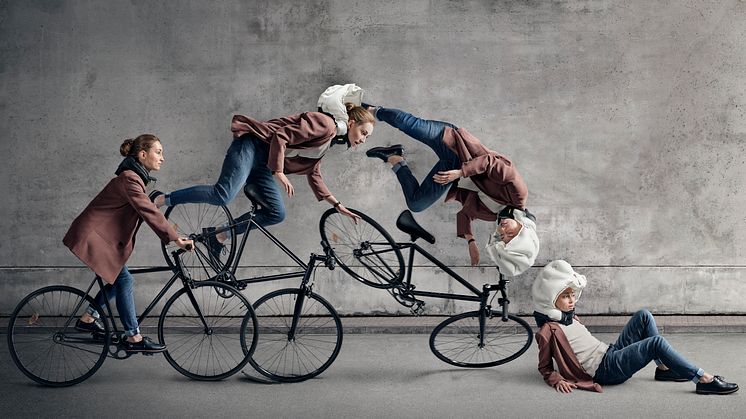
Press release -
More cycling shows the way out of the pandemic
Data collected from over 22,000 cyclists clearly shows how coronavirus has affected and continues to affect cyclists’ patterns of movement in cities throughout Europe. Hövding, which is behind the airbag for cyclists, can see from data from Hövding cyclists that they are using their bikes again out on the roads.
Data from phone companies has provided public authorities with valuable information about people’s patterns of movement during the coronavirus pandemic and the extent to which guidelines on staying at home have been observed. The cycle data that Hövding receives from cyclists throughout Europe also provides a clear picture of how cities were locked down and commuting by bike stopped and now shows that cycling has taken off again and is even increasing. Over 22,000 cyclists use Hövding’s app, contributing valuable data that shows anonymously how they are cycling.
“Using this data, we can clearly see how different countries and cities were affected at slightly different times and how cycling ceased entirely in some cities. We are now pleased to see, for example, how cycling has really taken off again in cities such as Copenhagen, Hamburg, Cologne and Stockholm. In Europe, the coronavirus pandemic may mean a cycling revolution, and the trend is for more and more people to cycle rather than take public transport,” says Hövding’s CEO, Fredrik Carling.
Knowledge and data about cyclists’ movements come from the phone app to which cyclists can connect their Hövding 3 using Bluetooth. This permits users to share their data and help influence the development of safe infrastructure. With the consent of the cyclist, in the future Hövding will be able to share information on where accidents frequently occur, where there is a high volume of cyclists and where in the infrastructure safer routes for cyclists should be developed.
“Coronavirus has created a window for change, and many large European cities have seen the benefit of encouraging people to cycle instead of facing the risk of infection on public transport. Commuter traffic is still down as many people continue to work from home, but our data shows that cycling is increasing daily,” says Fredrik Carling.
Since September 2019, cyclists wearing a Hövding have cycled the impressive distance of over 1 million kilometres. This is the equivalent of 25 times around the Earth or to the Moon and back.
The third generation of Hövding’s unique airbag for urban cyclists was launched in September. It is the biggest move yet for the innovation company.Many years of research and development are behind the new Hövding 3. This included the biggest ever collection of data on cycle movements and accidents for the algorithm in the Hövding. More than 3,000 accidents were staged with stuntmen and data was collected on over 2,000 hours of standard cycling. When Hövding has been activated, it registers movements 200 times a second. In an accident, the airbag is inflated in 0.1 seconds to enclose the head and hold the cyclist’s neck in place.




